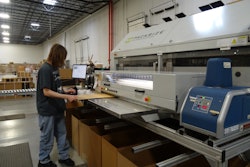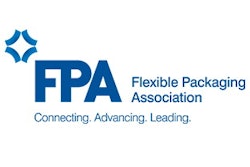
Those appalling numbers come from the National Association for PET Container Resources (NAPCOR) and the Association of Plastic Recyclers (APR), two entities that would know.
Why can’t get we Americans with the program? I spoke with Steve Alexander, President of APR, to try to understand. According to him, this temporary regression was a function of a lot of different moving parts, American apathy or ignorance being only a small (and shrinking) piece of the pie.
“The fact of the matter is we recycle twice the PET volume compared to what we did in 2009,” Alexander says.
Comparison to Europe is inherently unfair. They consider incineration to be recycling, export 90% of their plastics, practice a system of Extended Producer Responsibility (EPR), and have mandated consumer participation programs.
“It’s highly regulated—we’re not. Also, you have to consider commodities prices. When you have a lot of virgin PET on the market for a low price as we do now, there’s less demand for recycled materials,” he says. “The biggest problem is there is a lot of contamination in the stream today that wasn’t there before. You have full wrap-shrink labels, you have PETG labels, you have all sorts of new problems.”
He’s looking at you, brand owners. APR, in conjunction with label manufacturers, developed the Plastics Recycling Design Guide, which you can access at pwgo.to/3494. He strongly encourages you to use it if you plan on making any recycling claims. (The full URL for the Plastics Recycling Design Guide is here: http://www.plasticsrecycling.org/apr-design-guide/apr-design-guide-home)
But beyond simply mitigating the dismal (to the untrained eye) U.S. recycling stat, there’s actually plenty of reason to be optimistic.
“There’s never been more emphasis placed on recycling as there has in the last couple of years,” Alexander says. “Brands are making ambitious public commitments in terms of their sustainability goals, and the only practical way to meet them is to start using more recycled material. That means more demand in the market, more money in the market, and a circular economy is realistic. The materials flow one way, the money flows the other way, and that gives the MRF (material recycling facilities) the ability to upgrade technology and equipment, which is really the primary reason for optimism in the market.”
And recycling sortation technology is due for a leap forward. China’s National Sword policy removed a massive destination for U.S. recycling and in doing so, put the onus on MRFs for significant tech upgrades just to keep up with our own plastic waste.
Near infrared (NIR) and artificial intelligent sortation methods are at the leading, bleeding edge, and stand to strongly improve MRF capabilities to further feed the circular stream.
For their part, brand owners are beginning to feed the stream with more sortation-friendly material as well. The Coca-Cola Co. worked with plastic producer Indorama Ventures and converter CKS Packaging to create a new recyclable bottle for Coke’s Simply brand juices. The 89-liquid-ounce bottle with integral handle uses Indorama’s PolyClear EBM PET 5507 resin, which can be molded using extrusion blow-molding equipment. This PET replaces PETG bottles known to gum the PET recycling process. The 89-ounce Simply juice bottle is the first commercial application for the plastic. Elsewhere, Starbucks Coffee Co., Seattle, committed $10 million in partnership with the Closed Loop Fund and its Center for the Circular Economy to establish a consortium to launch the NextGen Cup Challenge. And Unilever partnered with PET-maker Indorama Ventures Public start-up Ioniqa on tech that purports to transform PET waste back into virgin grade material for food packaging.
A lot of factors conspired to make 2016 a down year for U.S. recycling, but the bigger picture looks a lot brighter than a single statistic in a news report can convey.

























